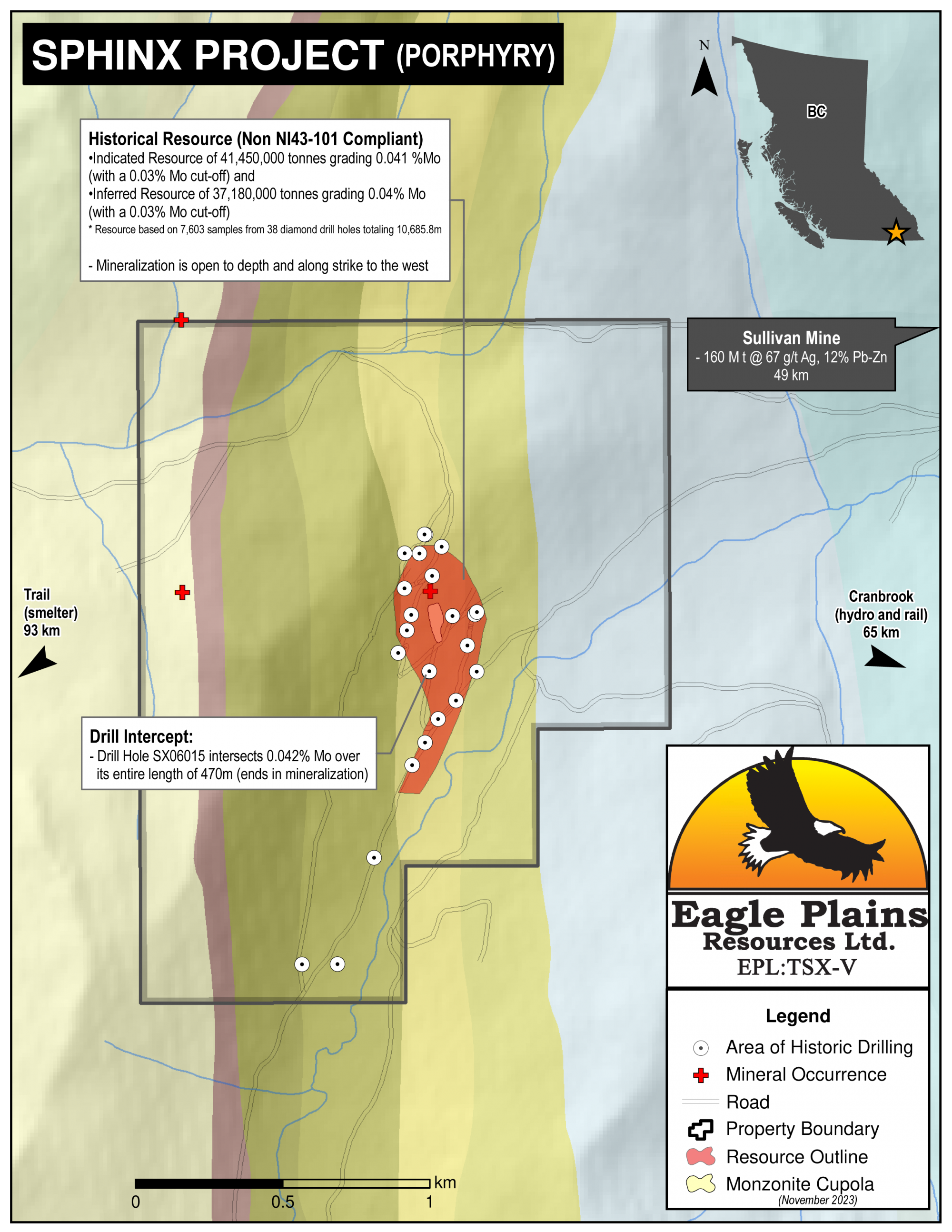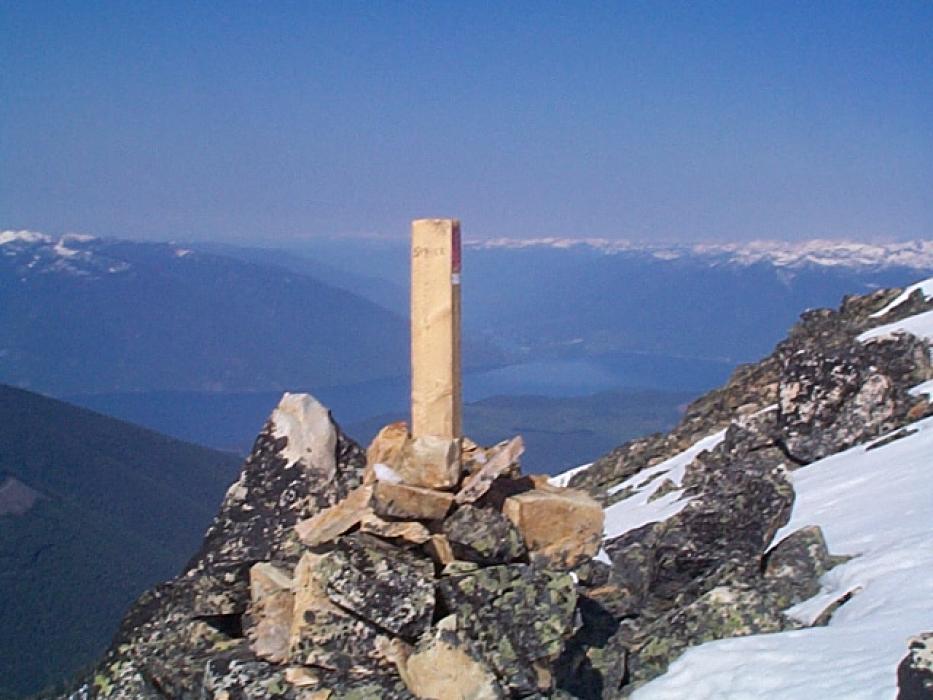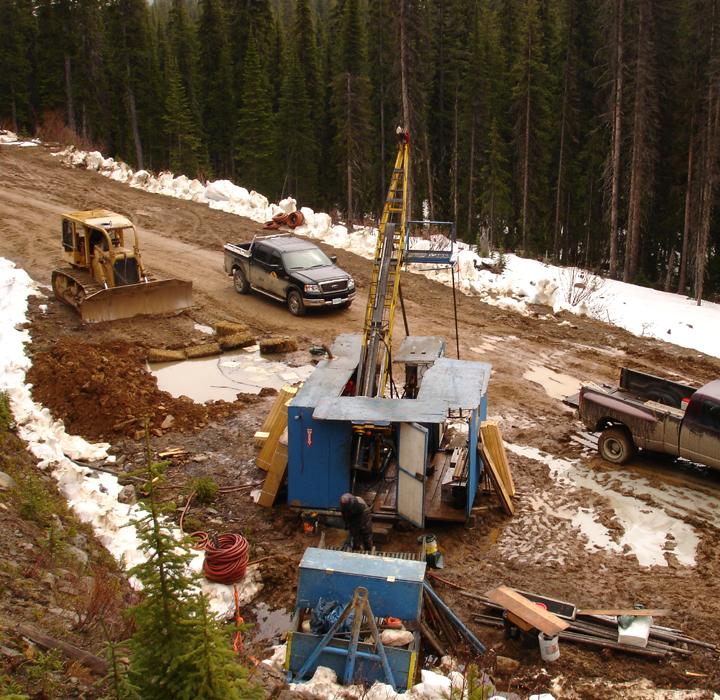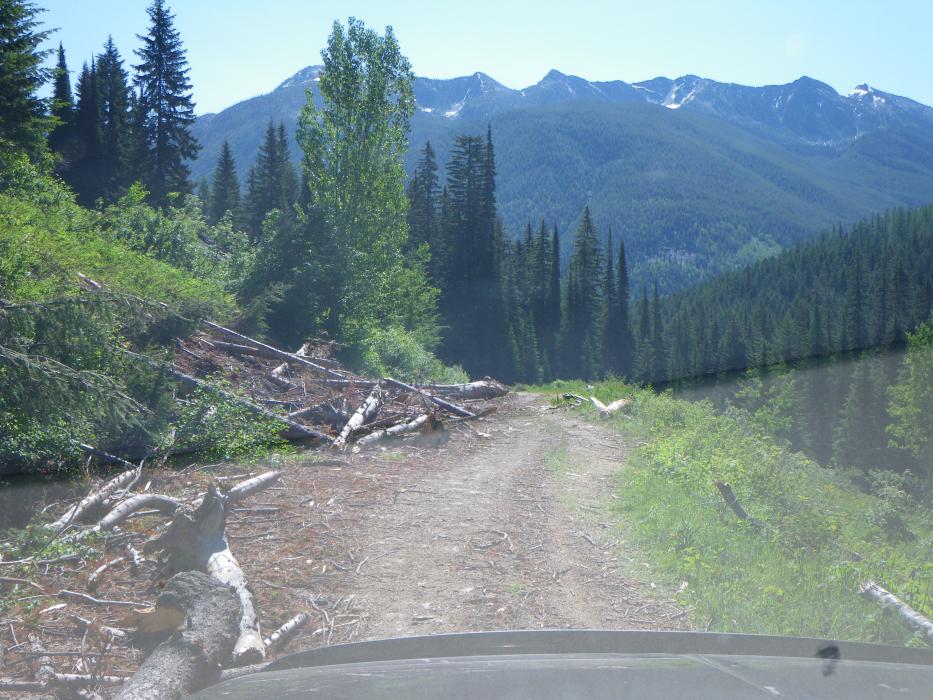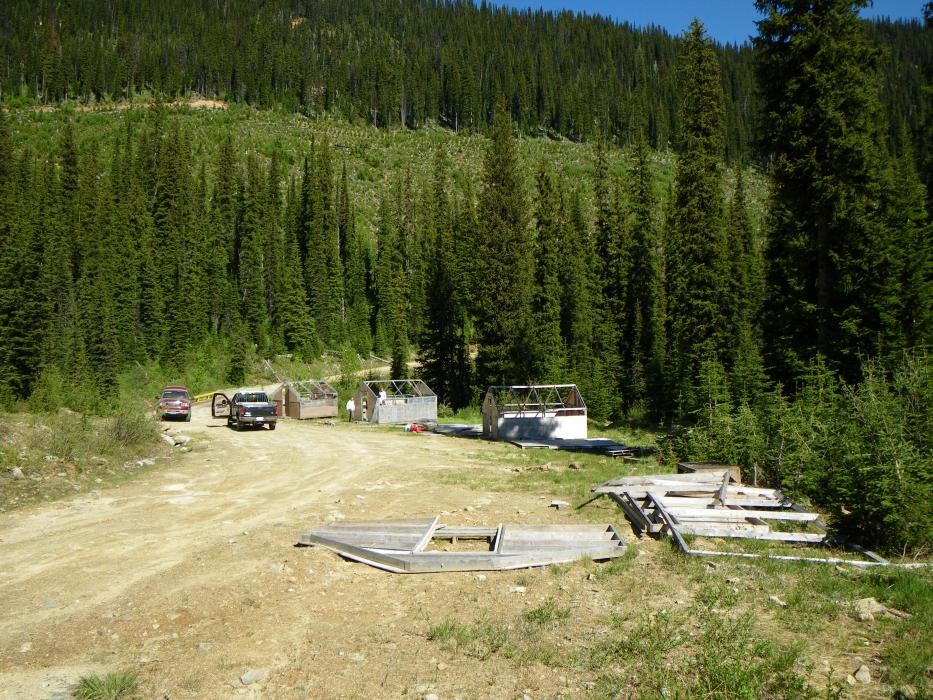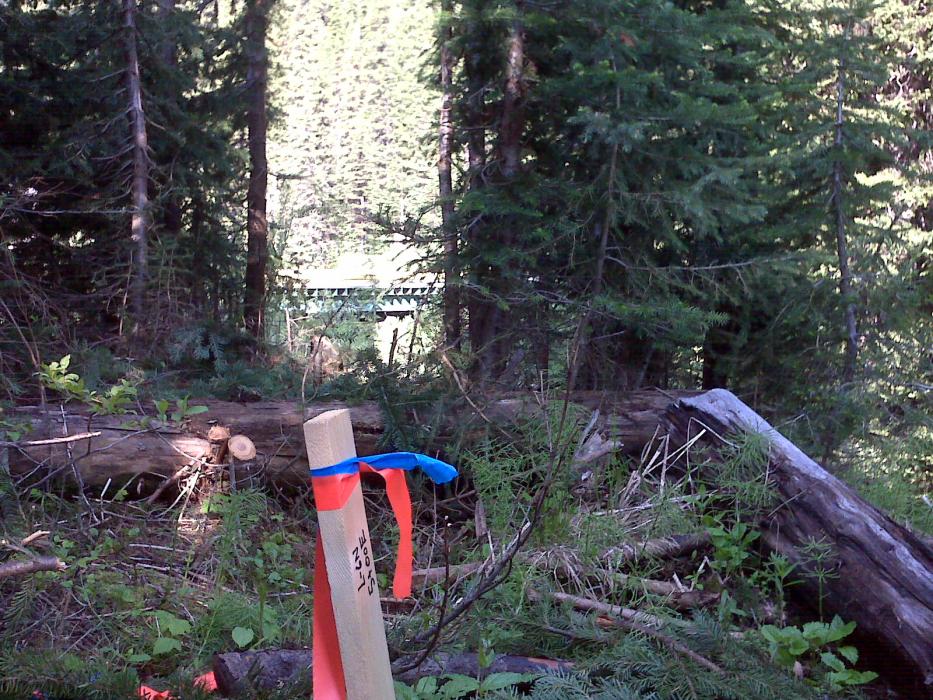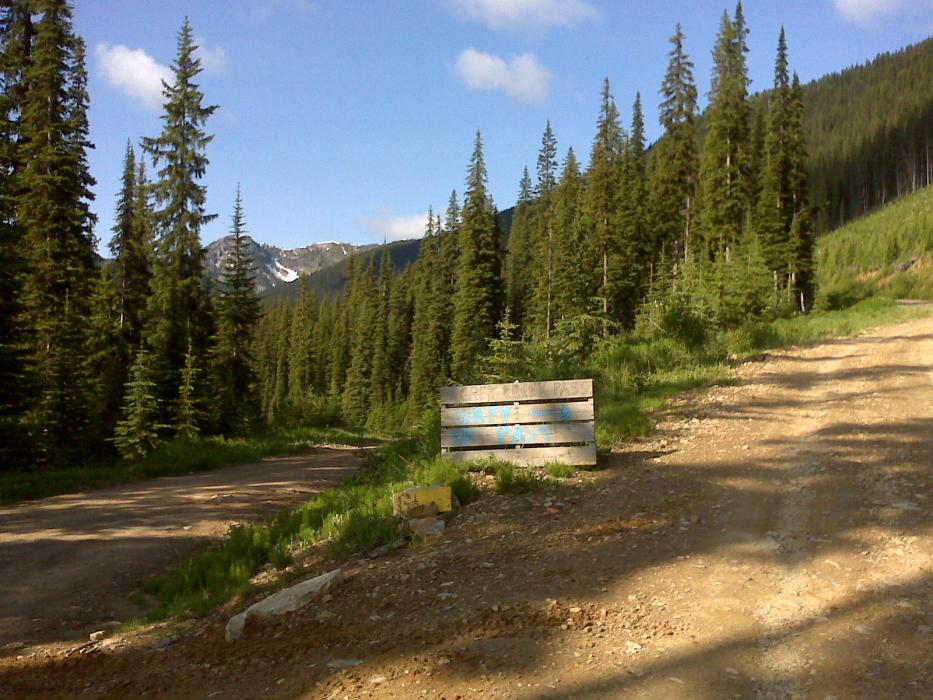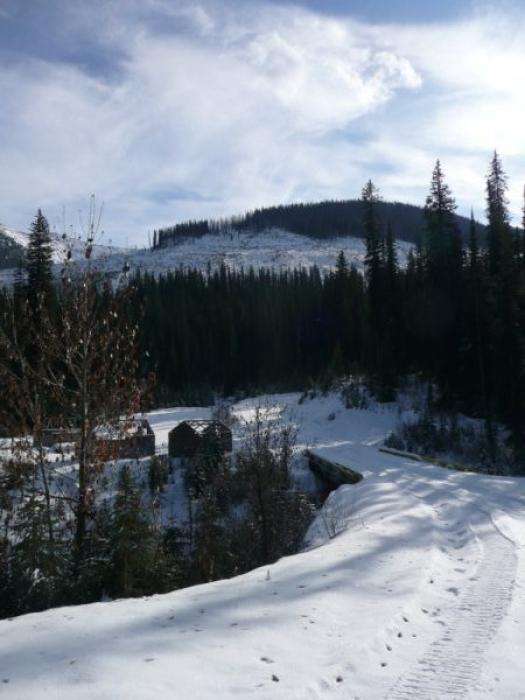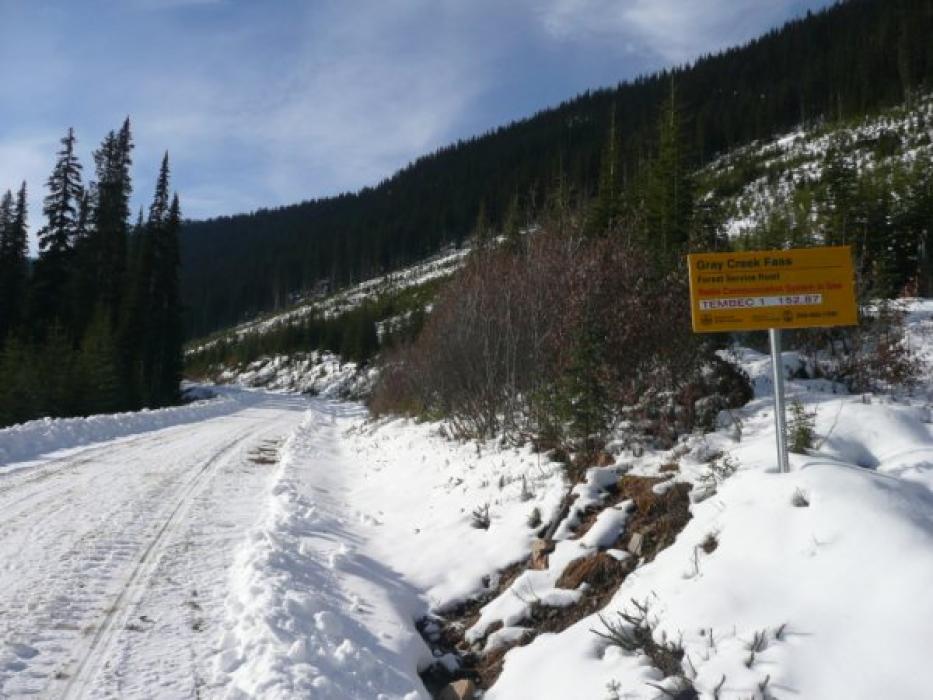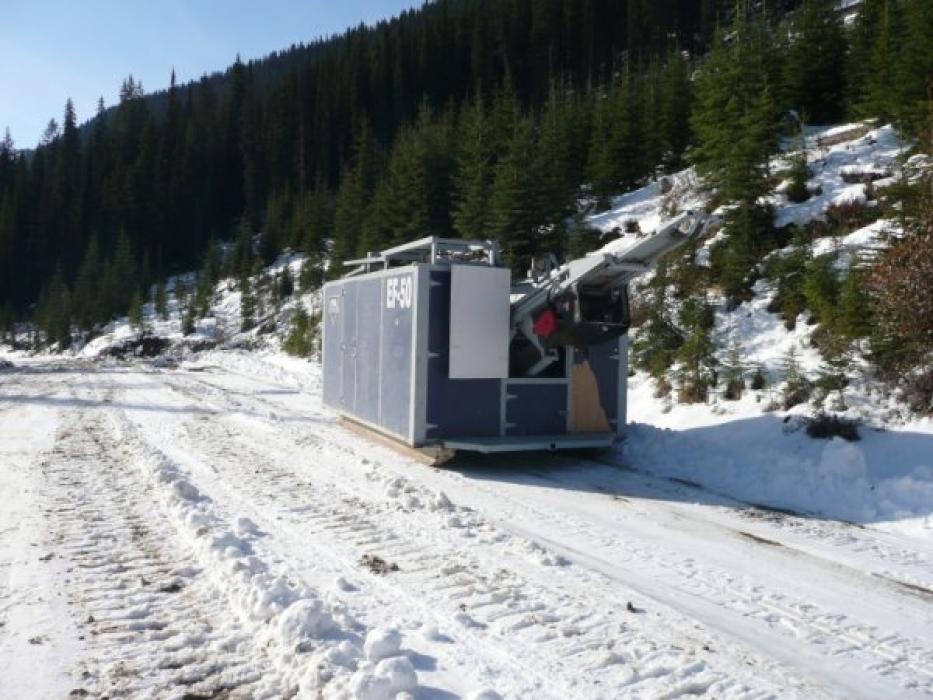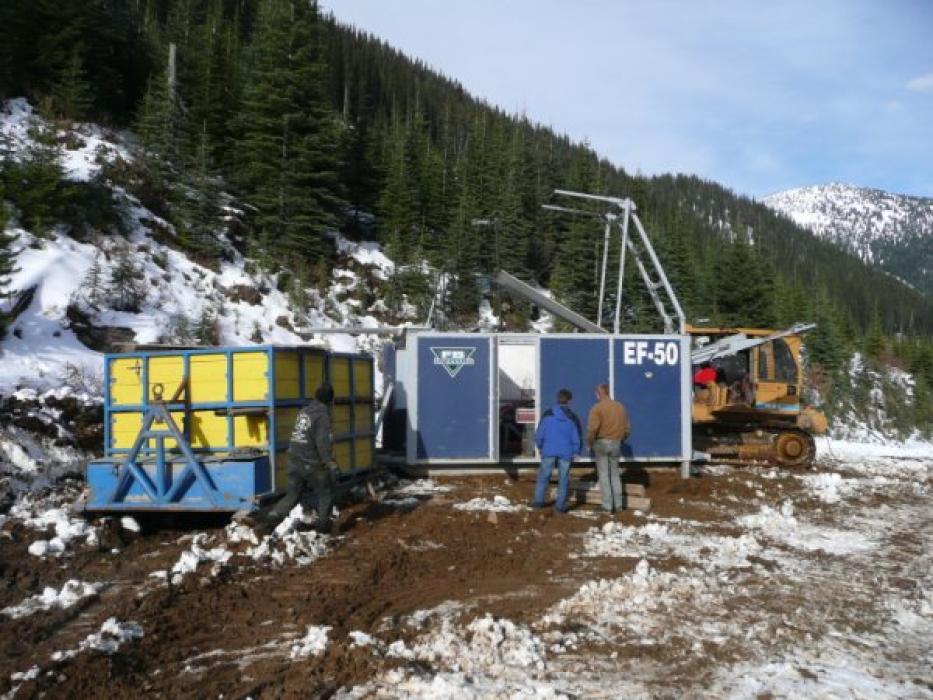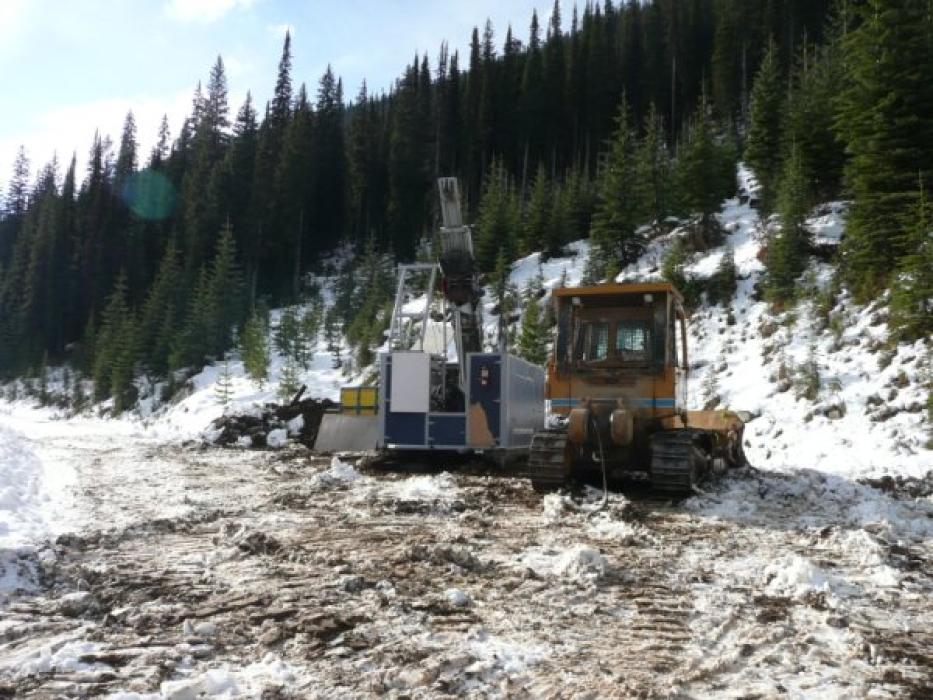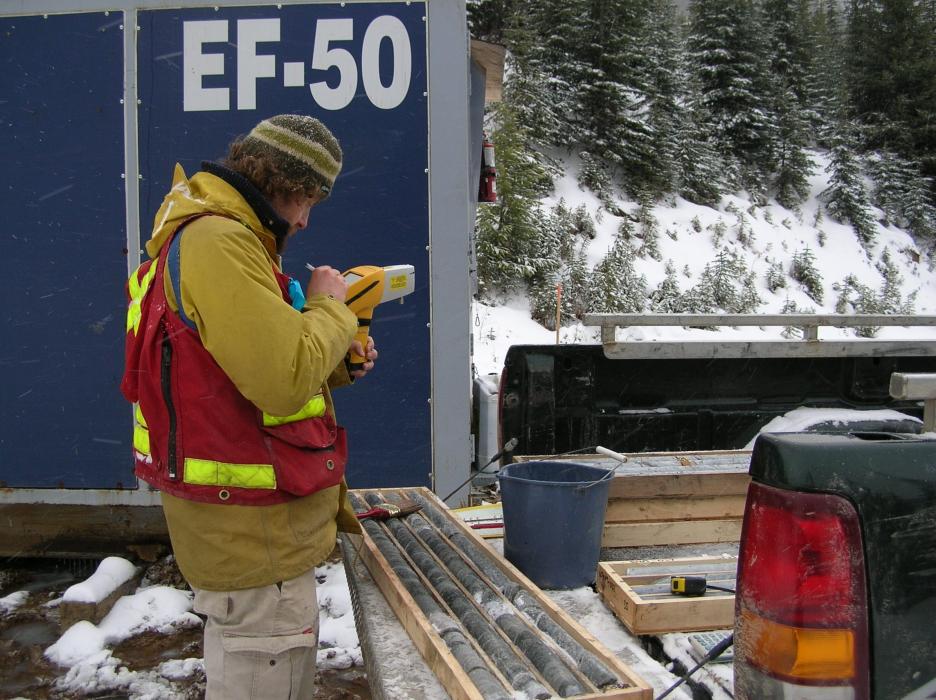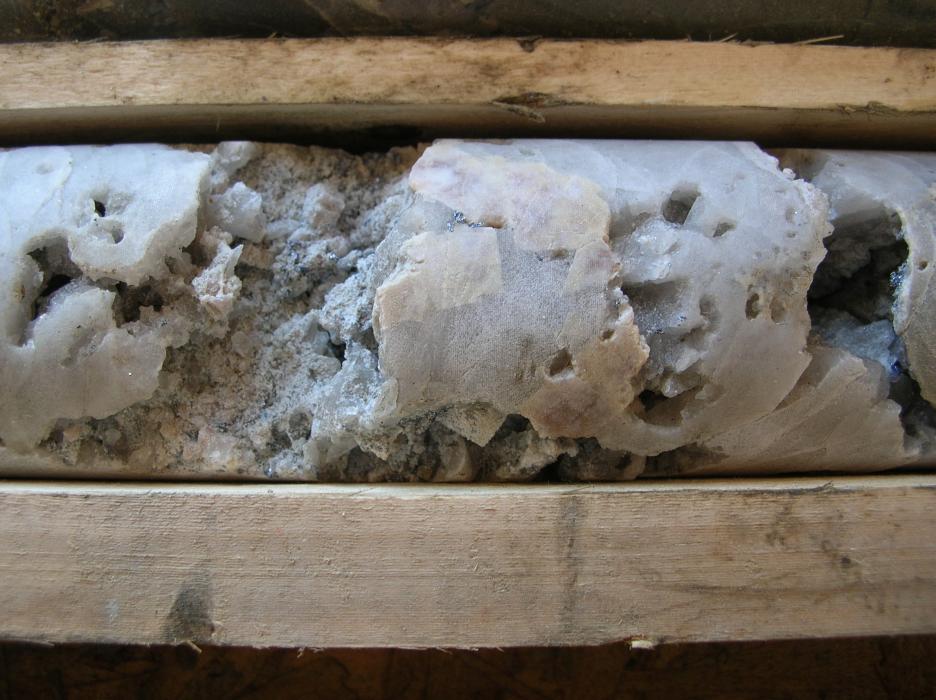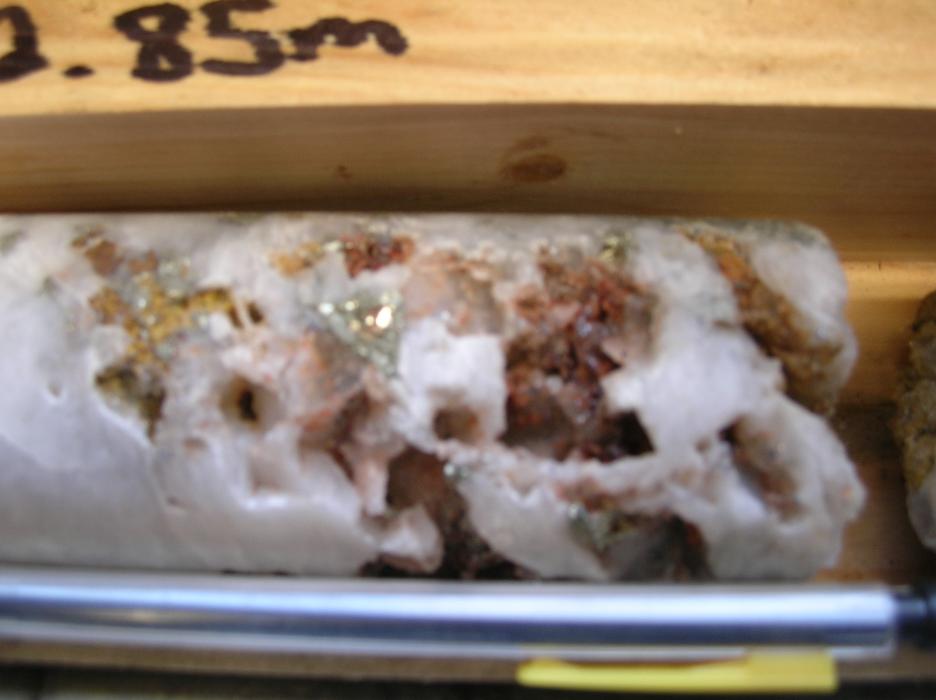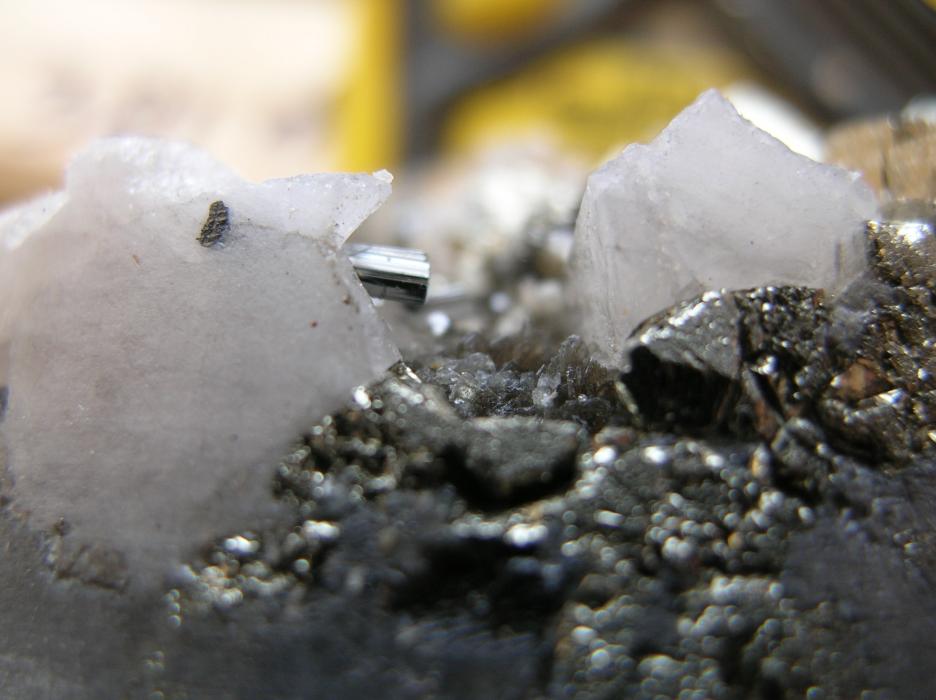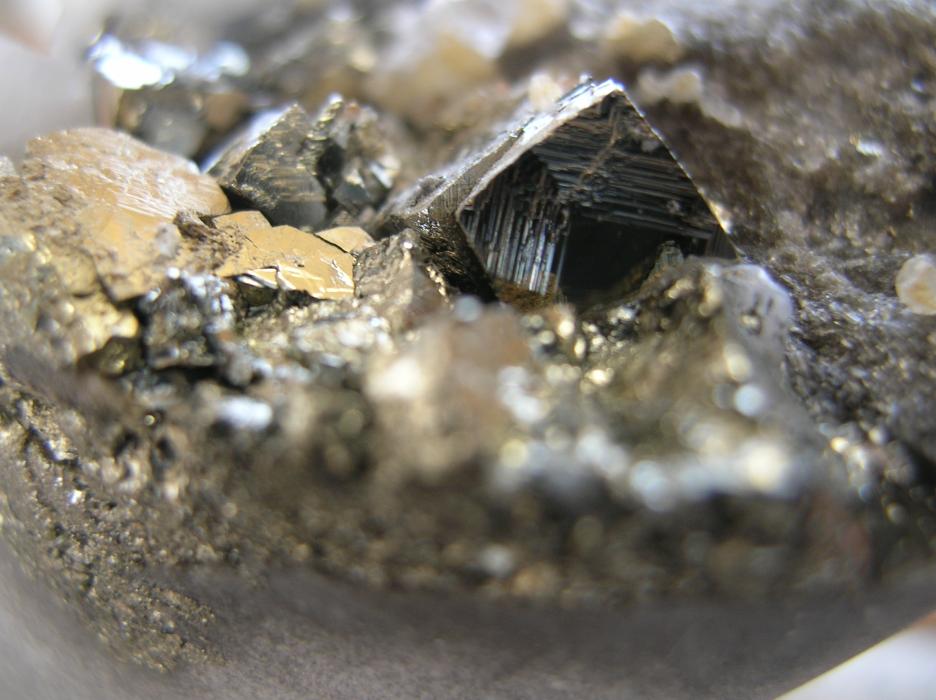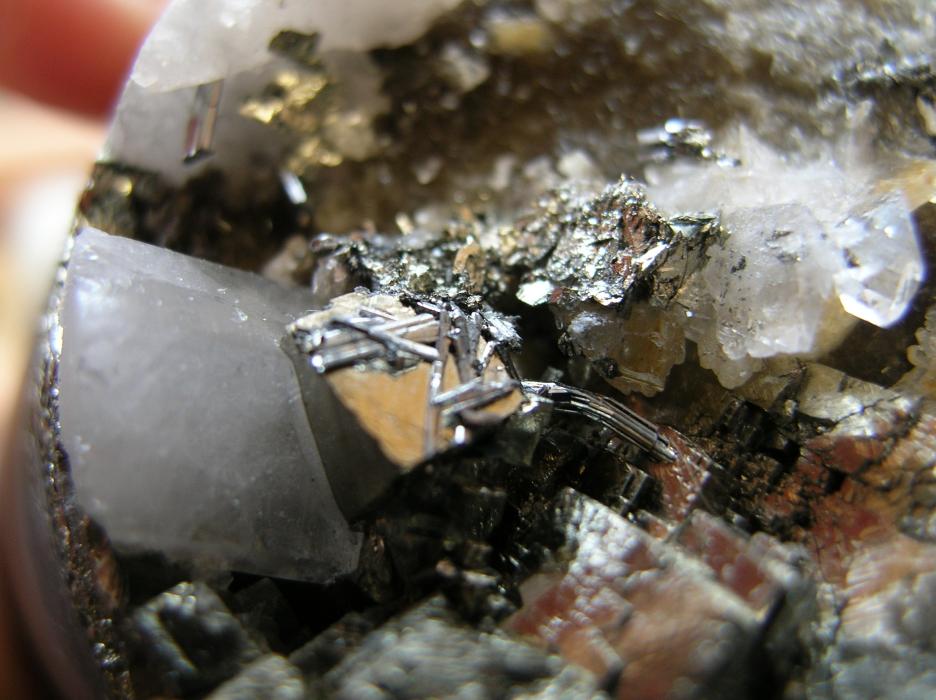
Sphinx Project
The 356ha Sphinx Property is located 60 km west of Kimberley, in SE BC. Re-staked in 2023, the claims are highly prospective for intrusion related Molybdenum/Tungsten mineralization and host a historical resource of molybdenum.
The property is road accessible with a hydro-power right of way nearby. Other services are available nearby in the regional center of Cranbrook.
-
- British Columbia
-
- Available for option: Yes
-
- Molybdenum,
- Tungsten
Project Highlights
- Hosts an historical resource as follows:
- indicated - 41,450,000 tonnes grading 0.041% Mo (with a 0.03% Mo cut-off) and
- Inferred - 37,180,000 tonnes grading 0.04% Mo open to depth (with a 0.03% Mo cut-off)
- Mineralized zone remains open to depth and to the west
- Numerous high-grade targets remain to be tested
- Encouraging exploration to date including multiple mineralized drill intercepts
- Excellent Infrastructure including drill roads and nearby smelter, rail, highway, airport, hydro
*Eagle Plains’ management considers these estimates to be historical in nature and cautions that a Qualified Person has not done sufficient work to classify the historical estimates as current mineral resources or mineral reserves in accordance with National Instrument 43-101. These estimates do not comply with current definitions prescribed by National Instrument 43-101 or the Canadian Institute of Mining, and are disclosed only as indications of the presence of mineralization and are considered to be a guide for additional work. The historical models and data sets used to prepare these historical estimates are not available to Eagle Plains, nor are any more recent resource estimates or drill information on the Property.
Summary
The 356ha Sphinx Property is located 60 km west of Kimberley, in SE BC. Re-staked in 2023, the claims are highly prospective for intrusion related Molybdenum/Tungsten mineralization and host a historical resource of molybdenum.
The property is road accessible with a hydro-power right of way nearby. Other services are available nearby in the regional center of Cranbrook.
Project Highlights
- Hosts an historical resource as follows:
- indicated - 41,450,000 tonnes grading 0.041% Mo (with a 0.03% Mo cut-off) and
- Inferred - 37,180,000 tonnes grading 0.04% Mo open to depth (with a 0.03% Mo cut-off)
- Mineralized zone remains open to depth and to the west
- Numerous high-grade targets remain to be tested
- Encouraging exploration to date including multiple mineralized drill intercepts
- Excellent Infrastructure including drill roads and nearby smelter, rail, highway, airport, hydro
*Eagle Plains’ management considers these estimates to be historical in nature and cautions that a Qualified Person has not done sufficient work to classify the historical estimates as current mineral resources or mineral reserves in accordance with National Instrument 43-101. These estimates do not comply with current definitions prescribed by National Instrument 43-101 or the Canadian Institute of Mining, and are disclosed only as indications of the presence of mineralization and are considered to be a guide for additional work. The historical models and data sets used to prepare these historical estimates are not available to Eagle Plains, nor are any more recent resource estimates or drill information on the Property.
Geology
The Sphinx property overlies sedimentary units that have been intruded by intrusive rocks. Molybdenum and associated tungsten mineralization occurs as quartz-pyrite stockwork veins hosted by both sedimentary and intrusive rocks. Chemical alteration of rock units suggests the presence of a substantial porphyry-style mineralizing system.
Mineralization
Molybdenite mineralization on the Sphinx property has been delineated by soil geochemistry and verified by diamond drilling. This work has discovered a zone of molybdenite mineralization that in plan has a surface measurement of at least 1000 meters by 250 to 300 meters wide and depth of at least 300 meters.
Exploration History
The project area was first identified by Cominco Ltd. which carried out surface work and limited diamond drilling between 1978 - 84 resulting in the delineation of a 1700m x 500m tungsten-moly anomaly, no drill results were released. In 1997, Barkhor Resources drilled 10 holes into the soil anomaly and encountered significant mineralization over a 1000m x 300m area.
Between 2003 and 2009 Eagle Plains carried out several exploration programs including airborne geophysics and diamond drilling which encountered widespread mineralization in most holes. The area outlined by drilling to that time measured approximately 400 x 1000m, the zone remained open to depth and along strike in one direction. In 2009, Touchdown Capital purchases the Sphinx project and soon announces an updated NI43-101 resource based on 7,603 samples from 38 diamond drill holes totaling 10,685.8m.
- Indicated Resource of 41,450,000 tonnes grading 0.041% Mo (with a 0.03% Mo cut-off) and
- Inferred Resource of 37,180,000 tonnes grading 0.04% Mo (with a 0.03% Mo cut-off),
Future Work
Further work on the property is recommended focusing on 3 separate phases, a prefield phase to consolidate and reanalyze available information and two field programs to include mapping, geochemical surveying and finally, drilling.
Eagle Plains - A Project Generator
Eagle Plains Resources is a project generator with several mineral exploration properties of merit that meet qualifying transaction requirements. We facilitate the listing process for capital pool companies and initial public offerings while providing technical expertise for exploration programs. Companies interested in co-operatively exploring any of our projects please contact: Chuck Downie at ccd@eagleplains.com or Mike Labach at mgl@eagleplains.com or call 1 866 Hunt Ore (486 8673).
The Sphinx property is currently available for option.
Details
The 356ha Sphinx Property is located 60 km west of Kimberley, in SE BC. Reacquired by staking in 2023, the claims are highly prospective for intrusion related Molybdenum/Tungsten mineralization and host a historical resource of molybdenum.
The property is road accessible via a network of logging and mineral exploration roads. A hydro-power right of way exists directly to the north while other services are available nearby in Cranbrook, the regional center.
Project Highlights
- Hosts an historical resource as follows:
- indicated - 41,450,000 tonnes grading 0.041% Mo (with a 0.03% Mo cut-off) and
- Inferred - 37,180,000 tonnes grading 0.04% Mo open to depth (with a 0.03% Mo cut-off)
- Mineralized zone remains open to depth and to the west
- Numerous high-grade targets remain to be tested
- Encouraging exploration to date including multiple mineralized drill intercepts
- Excellent Infrastructure including drill roads and nearby smelter, rail, highway, airport, hydro
*Eagle Plains’ management considers these estimates to be historical in nature and cautions that a Qualified Person has not done sufficient work to classify the historical estimates as current mineral resources or mineral reserves in accordance with National Instrument 43-101. These estimates do not comply with current definitions prescribed by National Instrument 43-101 or the Canadian Institute of Mining, and are disclosed only as indications of the presence of mineralization and are considered to be a guide for additional work. The historical models and data sets used to prepare these historical estimates are not available to Eagle Plains, nor are any more recent resource estimates or drill information on the Property.
Geology
The property hosts widespread molybdenite mineralization and most geological work has been focused in and around the mineralized area. Outcrop in the area underlain by the moly mineralization is very rare. Intense thermal alteration has totally recrystallized the Mt. Nelson sediments, such that primary textures are totally destroyed. However, geological mapping has sub-divided the meta-sediments into three distinct metamorphic facies. The dominant metamorphic facies in the area of interest is a sericite-quartz phyllite. This rock is generally light yellowish white in colour and is composed of approximately 60% sericite and 40% quartz. The sericite-quartz phyllite has a finely laminated texture formed by thin alternating layers of finely crystalline sericite and aphanitic quartz. Contact relationships between the sericite-quartz phyllite facies and the adjacent metamorphic facies suggest that much of the sericite-quartz phyllite was formed at the expense of the older facies. Drilling indicates that the sericite-quartz phyllite facies is increasing in width and intensity at depth. A quartz monzonite cupola and numerous monzonite and aplitic dykes intrude the above molybdenite bearing meta-sediments. In plan the cupola has a near surface measurement of 100 meters by 180 meters elongated northerly parallel to the dominant foliation pattern. Drilling shows that the intrusive dips steeply west parallel to the dip of the dominant foliation and that the quartz monzonite body is widening at depth. The quartz monzonite consists of light gray aphanitic quartz surrounding white and light green feldspar, with rare pink feldspar and abundant orange feldspar developed near moly-quartz veinlets. Texturally the quartz monzonite consists of equigranular, coarsely crystalline sub-hedral feldspar, with rare large phenocrysts, in an aphanitic quartz matrix, with some of the quartz forming “quartz eyes”. Drillcore reveals banded quartz textures within the intrusive similar to that of 'Brain Rock' documented at other deposits such as Climax and Henderson. Miarolitic cavities are abundant throughout the intrusive. Argillic alteration is well developed throughout the quartz monzonite, with of the feldspar altered to kaolinite. Original biotite is altered to sericite and chlorite, with strong development of late stage potassic feldspar in areas adjacent to quartz-moly veinlets.
Mineralization
Mineralization has been delineated by soil geochemistry and verified by diamond drilling. This work has discovered a zone of molybdenite mineralization that in plan has a surface measurement of at least 1000 meters by 250 to 300 meters wide and depth of at least 300 meters.
The molybdenum is hosted in quartz-molybdenite-pyrite stockworks, defining the latest geological event on the Sphinx claims which is developed only in the area of intense thermal alteration. Mineralization is best developed within a 50m thick zone defined by the quartz monzonite contact. Ore grade mineralization is also present in the quartz monzonite body itself, in the sericitic quartzite, in the sericite-quartz phyllite, and is poorly developed in the calc-silicate-skarn facies.
The stockwork is formed mainly by a white, drusy quartz gangue with lesser K-feldspar and rare fluorite. The principle sulphides are molybdenite and pyrite is deposited mainly as selvages along the vein contacts. Molybdenite and pyrite also line quartz crystal druses in the veins. The quartz molybdenite-pyrite veins also host magnetite that is locally abundant. Rare yellow sphalerite and scheelite also occur in some of the moly bearing veins.
Where the mineralized stockwork is developed in the meta-sediments, phyllic alteration is also well- developed forming quartz-sericite envelopes around the molybdenite-pyrite bearing veins. Within the quartz monzonite, strong phyllic and potassic alteration is developed as quartz sericite and k-feldspar envelopes around molybdenite-pyrite bearing veins. Argillic alteration of feldspar in the monzonite is well developed in areas of good molybdenite mineralization.
The best molybdenum grades occur in drill holes which are drilled in or near the quartz monzonite cupola. To date, a total of 46 drill holes have tested molybdenite bearing stockwork. In nearly all of the holes molybdenite occurs continuously from the top to the bottom of the hole.
Exploration History
The project area was first identified by Cominco Ltd. in 1978, which carried out surface work and limited diamond drilling from 1978 to 1984. Cominco completed a soil geochemical survey which resulted in the delineation of a 1700m x 500m tungsten-moly anomaly. 4-6 drill holes were completed, but no results were released.
In 1997, Barkhor Resources drilled 10 holes into the soil anomaly and encountered significant mineralization over a 1000m x 300m area. Results from only one hole were ever released but a private consultant reported that “typical drill intersections are averaging 0.03-0.038% Mo over core lengths ranging from 90 to 230m”.
In 2003 Eagle Plains Resources staked and optioned claims in the area that became known as the Sphinx Property and began advancing the project as a bulk-tonnage target.
In 2004 Eagle Plains flew airborne geophysics outlining a large intrusive feature associated with a previously-defined soil anomaly. All core from the historical 1980-83 and 1997 programs by other operators was secured and examined.
In 2005, Eagle Plains completed a 14-hole, 10,000’ diamond drilling project and reported widespread mineralization in most holes. The area outlined by this and past diamond drilling programs measures approximately 400 x 1000m. Nearly all holes intersected significant molybdenum mineralization over a broad area, with the mineralized zone open to depth and along strike in one direction.
In 2006 Eagle Plains commissioned a technical report outlining an Inferred Resource of 62,005,615 tonnes grading .035% Mo, using a cut-off grade of .01% Mo representing 47,884,630 lbs of contained molybdenum metal.
In June 2009, Eagle Plains sells its 100% interest in the Sphinx property to Touchdown Capital Inc. Later that year, touchdown commissions an updated NI43-101 report outlining the following resources based on 7,603 samples from 38 diamond drill holes totaling 10,685.8m.
- Indicated Resource of 41,450,000 tonnes grading 0.041% Mo (with a 0.03% Mo cut-off) and
- Inferred Resource of 37,180,000 tonnes grading 0.04% Mo (with a 0.03% Mo cut-off)
Future Work
Further exploration work on the property is recommended and should focus on defining new mineralized targets such as satellite or deeply buried mineralized intrusives and increasing the grade of the existing resource. Future exploration efforts should also focus on grassroots exploration on the rest of the property. A two-phase program, with a significant pre-field component is recommended.
Phase 1 - Pre-Field
Includes
- Reanalysis of the 2004 airborne VTEM survey
- Re-Os dating of Mo mineralization
- PIMA characterization of the related alteration system
- Geochemical orientation utilizing a portable XRF analyzer
- Reanalysis of core in the search for deeply buried secondary intrusive could include several techniques
Phase I - Groundwork
Includes:
- Detailed geologic mapping, a geochemical orientation survey over the known deposit, and recce soil geochemical surveys utilizing portable XRF technology
Phase II - Groundwork
Includes:
- 1000m of drilling focused on increasing the grade of the indicated and inferred resources to at least 0.05% Mo; infill drilling should be focused on the contact zone of the quartz monzonite intrusive where the best grades have been encountered.
- It’s recommended that a number of north – south trending holes should be collared to:
- Gain increased knowledge of the intrusives geometry, especially at depth
- Test the presence of a possible fault to the south
- Test the dominant grain of mineralization in the meta-sedimentary host rocks
Eagle Plains - A Project Generator
Eagle Plains Resources is a project generator with several mineral exploration properties of merit that meet qualifying transaction requirements. We facilitate the listing process for capital pool companies and initial public offerings while providing technical expertise for exploration programs. Companies interested in co-operatively exploring any of our projects please contact: Chuck Downie at ccd@eagleplains.com or Mike Labach at mgl@eagleplains.com or call 1 866 Hunt Ore (486 8673).
The Sphinx property is currently available for option.
Updated November 8, 2024
